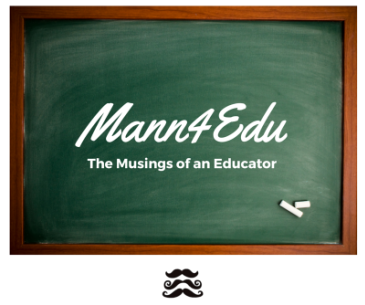|
As I mentioned in my previous blog post I have returned back to school. So students, your principal is hitting the books this semester too. Having earned three college degrees in my life I am not a stranger to school and how to succeed in school. In the midst of my first full week of school I quickly realized that I am going to have to be able to work in ambiguity. Coming into this commitment I knew that I would be reading volumes of texts and journal articles and of course writing about what I am learning. What I did not realize until now is that I am going to have to learn how to thrive while working in ambiguity with regards to some of the different tasks I am being asked to perform and complete. It is purposeful ambiguity in that the outcome is for me to become a better questioner, researcher, and seeker of knowledge that can distinguish and differentiate between good information and great information. But it is ambiguity none the less and as an educator we do not always work well in ambiguity. Why? We want to be told what to do by our teachers. It is how we have been trained. It is what we know. But do we really grow as a learner with this approach? There are open ended assignments and then there are Open. Ended. Assignments. Don’t get me wrong, I am not out here without a life line of help and support because it is there. I am out here being expected to forge my way through my learning and being able to share that learning on a very short timeline. This is not the “normal” way we “do school” and it takes some adjustment. The assignments we are given are designed to push our thinking and help us to develop our skills. We are given choice in the areas we would like to work along with a list of preferred research journals and resources to utilize and then we complete assignments based off our own choices and selections. The ambiguity really comes in with wondering if the research I am choosing to review, analyze, and share is what the professor is looking for and, of course, am I completing the assignment the way the professor wants. And there is the source of the real uncertainty for me. What is it that the professor wants? Therein lies the trap of being asked to work in ambiguity, floundering in your own uncertainty because of the learned need to have “approval” before moving to the next stage of work. Over the last few very late nights I realized that I should be asking what is it that I want to learn about (my interests) and how can I apply that to what the professor is asking me to do (skill development). I had forgotten the most powerful option the professor provided to us, the power of choice. I had choice over the material I would be working with and when I came to that realization I was able to thrive in the ambiguity because the research I had chosen was relevant to my interests.
I had scrapped the four articles I had originally because they did not really speak to what I want to work in the next few years. They were good but when I realized that I had the power to not settle I found what spoke to me and all of a sudden the skill work became less difficult. As you design lessons for your students and staff for that matter I want you to think about ambiguity and choice. There is power in purposeful ambiguity when it is designed correctly. The power of choice made all of the difference for me when I felt as if I was not ever going to be able to complete what was being asked of me. How can you build in choice for your students? You would be surprised how big of a difference adding the element of choice will for a student! Think. Achieve. Succeed. Jeff
0 Comments
Leave a Reply. |
Jeff MannA lifelong learner that is committed to asking questions to seek greater understandings. Do what you can, with what you have, where you are Archives
January 2023
Images & Quotes that Inspire |





 RSS Feed
RSS Feed
